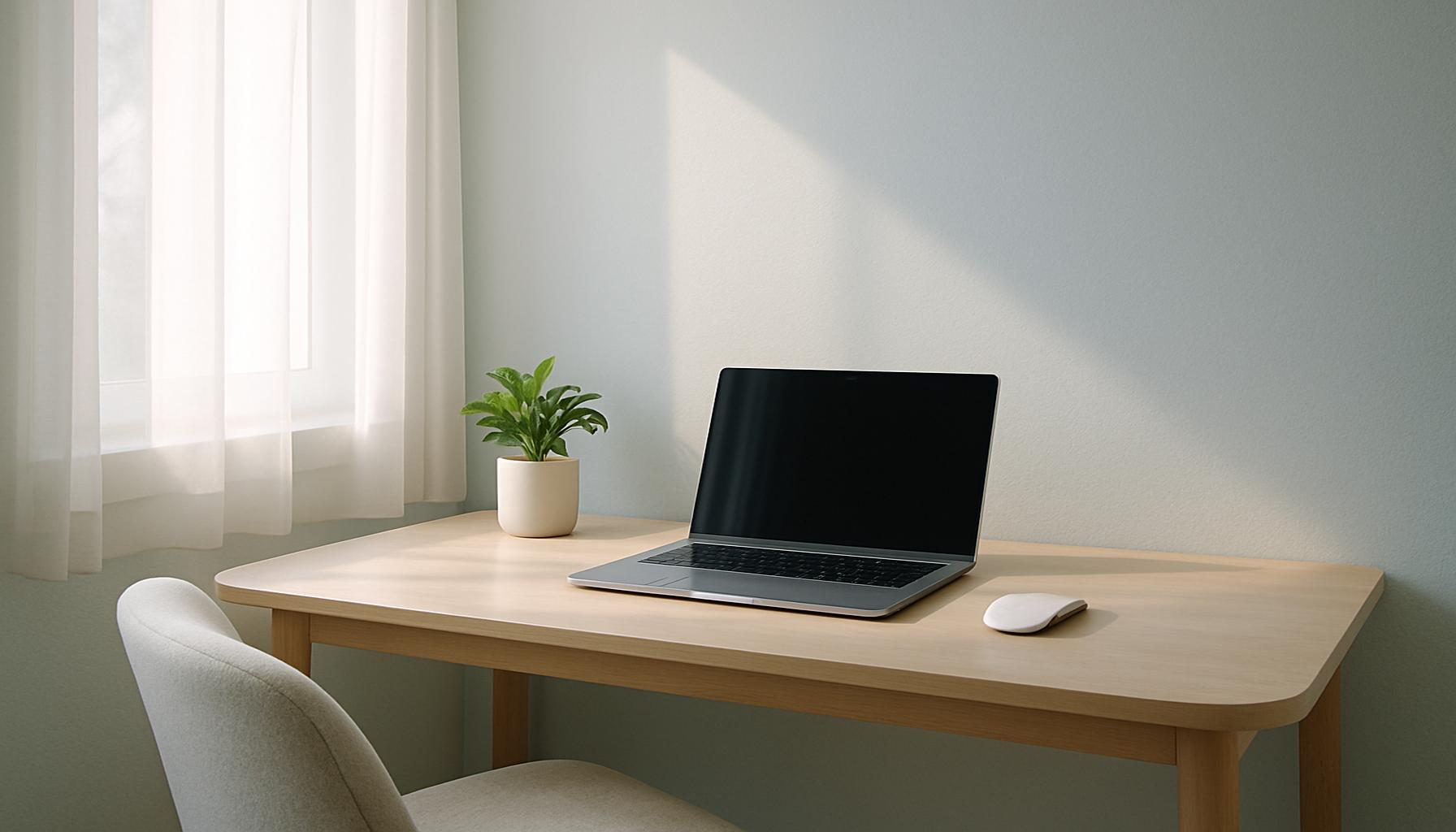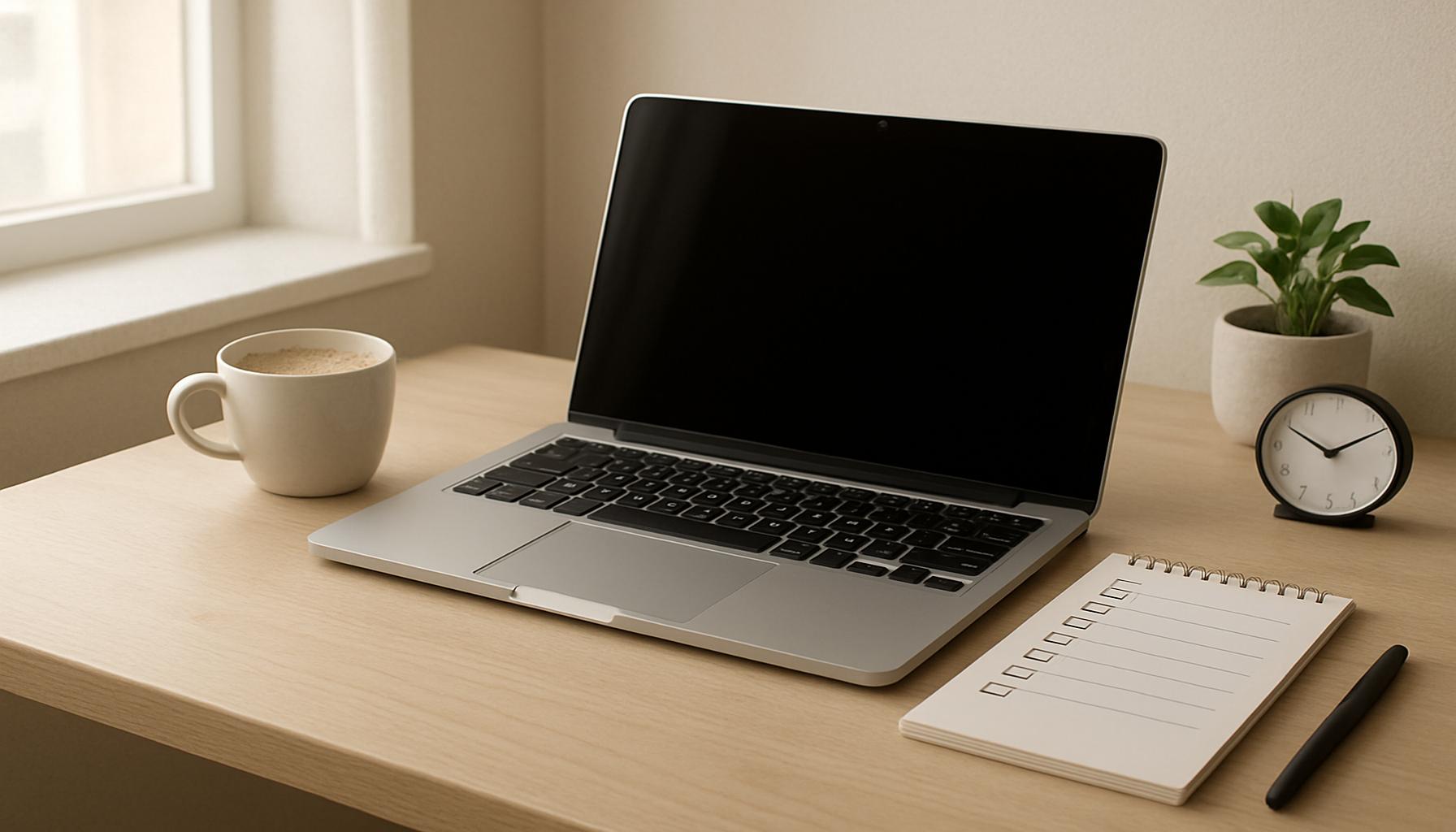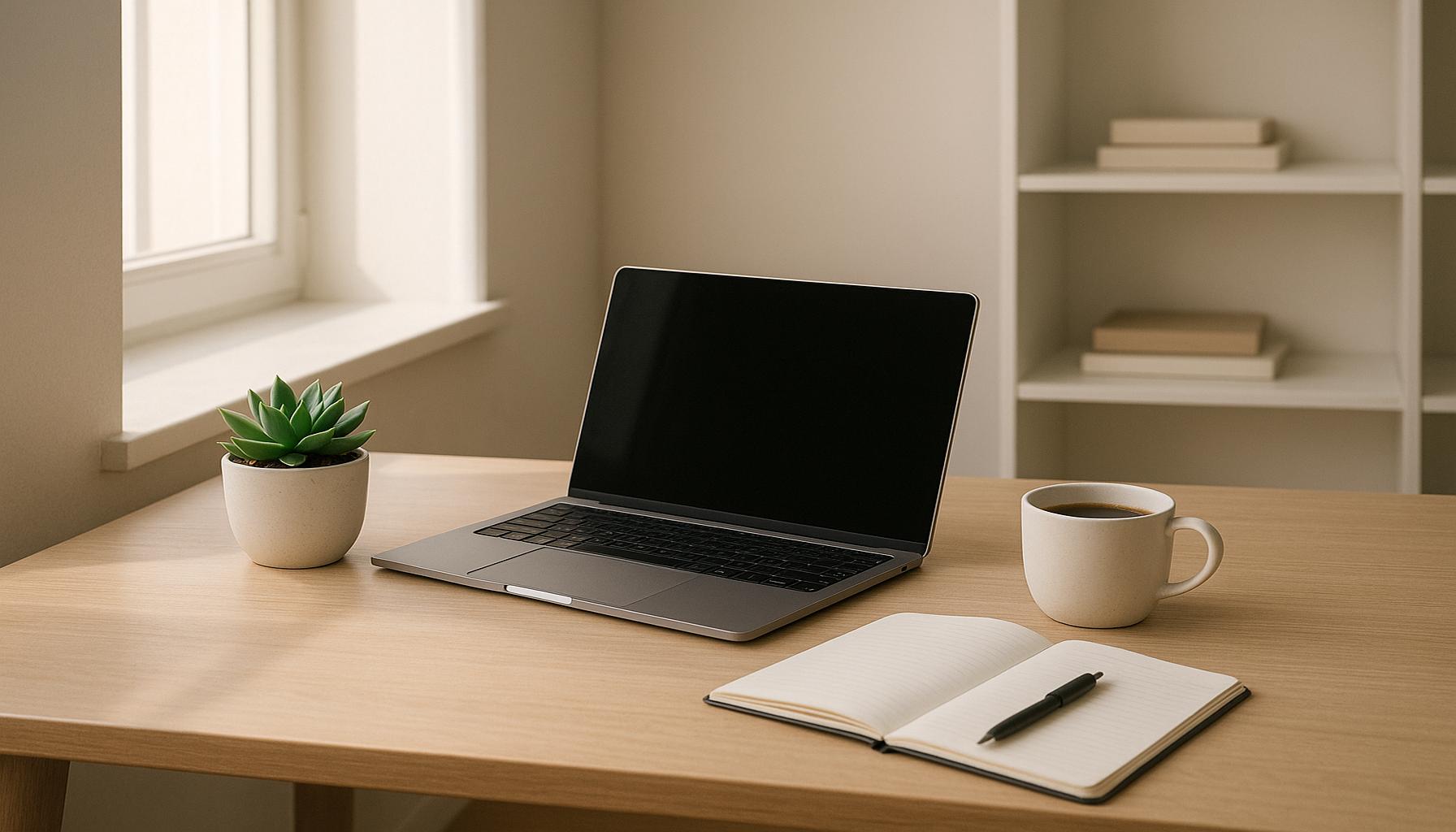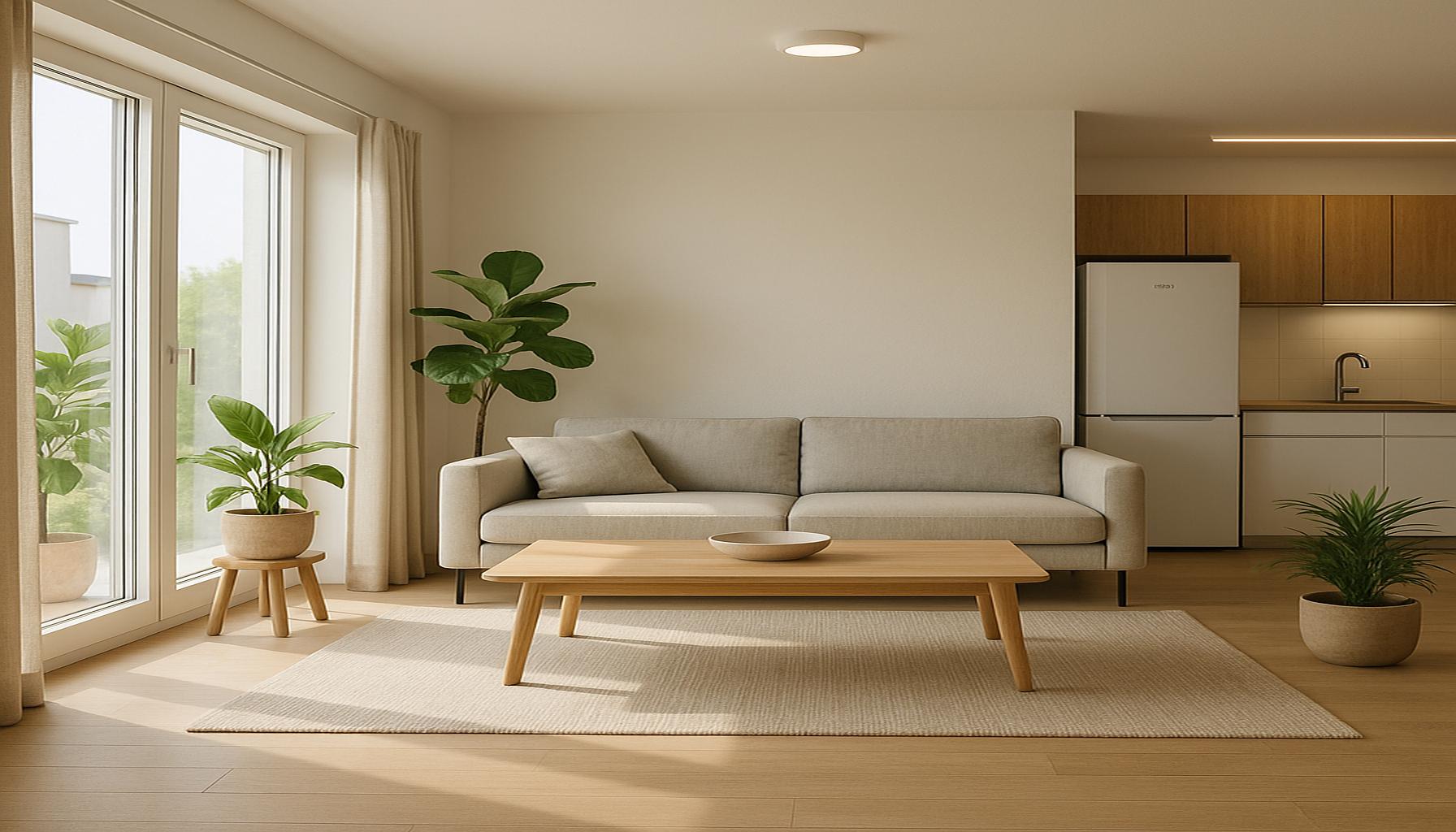Minimalism and Stress Reduction: Creating an Efficient and Calm Work Environment

The Benefits of Minimalism in the Workplace
In an era defined by constant connectivity, the challenge of balancing professional and personal lives has never been more pressing. This reality propels many individuals to seek refuge in the practice of minimalism. Far from merely a design trend, minimalism advocates for a lifestyle that emphasizes simplicity and intentionality. By minimizing clutter—both physical and mental—individuals can foster a harmonious work environment that enhances their overall well-being.
Research has increasingly illuminated the connection between our surroundings and our psychological state. For instance, a study published in the journal Environment and Behavior found that clutter can contribute to feelings of stress and overwhelm, diverting attention from essential tasks. A clean, organized workspace, in contrast, has been shown to produce significant improvements in various areas:
- Increased productivity: With fewer distractions demanding attention, individuals can concentrate more effectively on their tasks. A minimalist workspace allows for a streamlined focus, which can lead to completing tasks more efficiently.
- Enhanced creativity: A clutter-free environment can stimulate creativity by freeing the mind from excess stimuli. Artists and innovative thinkers often find that simplicity inspires new ideas, as it encourages them to think outside the box without being bogged down by distractions.
- Improved mental clarity: A tidy workspace promotes a sense of control and organization. This clarity can empower individuals to make decisions more easily and articulate their thoughts more clearly in collaborative settings.
Beyond productivity gains, the emotional benefits of minimalism are equally compelling. Embracing a simpler lifestyle fosters a sense of calm amidst daily chaos. It invites individuals to reclaim ownership of their mental space by discouraging the accumulation of unnecessary tasks and responsibilities. This practice not only reduces anxiety but also cultivates a more mindful approach to work and life.
As an example, many companies across the United States, from tech giants to creative agencies, have begun to adopt minimalist principles in their office designs. Google, known for its innovative work culture, has implemented open spaces with minimalist decor that prioritize light and collaboration. Employees often report higher levels of satisfaction and lower stress levels in such environments.
Ultimately, integrating minimalism into your work routine is an ongoing journey toward a more peaceful and productive existence. As you take steps to declutter your space, you may begin to notice profound changes—not just in your work output but also in your overall mental health. The tranquility derived from minimalism can extend beyond your desk, leading to lasting stress reduction in all areas of your life.

DISCOVER MORE: Click here to unlock insights
Transforming Workspaces: The Core Principles of Minimalism
As the demands of modern work life continue to escalate, the principles of minimalism provide a refreshing antidote to stress-induced chaos. Adopting a minimalist philosophy in the workplace involves more than simply removing clutter; it encompasses a holistic approach that prioritizes efficiency, simplicity, and clarity in every aspect of one’s professional environment. This practice resonates particularly well within the U.S. workforce, where many employees report feeling overwhelmed by excessive workloads and information overload.
At its core, minimalism in the workplace encourages individuals to critically assess what they truly need for their roles. This often involves identifying and eliminating unnecessary tasks or materials that do little to contribute toward intended goals. Here are several key principles to consider when aiming to cultivate a minimalist work environment:
- Declutter your space: Start with physical items. Keep only what is essential—such as your computer, a notepad, and a few stationery items—and remove anything that does not actively support your job function. This simple act can lead to immediate feelings of relief and order.
- Digitize when possible: In today’s technology-driven world, consider converting physical documents into digital formats. This reduces the need for extensive physical file systems, enabling faster access and better organization of information.
- Organize thoughtfully: Use storage solutions that prioritize accessibility. A minimalist approach favors systems where commonly used items are easily reachable, fostering efficiency and preventing time loss searching for needed tools.
The mental and emotional ramifications of minimalism are profound. An organized workspace can lead to decreased feelings of anxiety and improved focus. According to a study from the American Psychological Association, individuals who work in clutter-free environments report significantly lower levels of stress and higher rates of job satisfaction. As employees feel more in control of their surroundings, they are better equipped to tackle challenges creatively and thoughtfully.
Employers are increasingly recognizing the value of minimalism in workplace design. Forward-thinking companies such as Microsoft and Airbnb have adopted minimalist office spaces that feature open layouts, natural light, and fewer distractions. This design ethos not only enhances productivity but also promotes employee well-being, creating an atmosphere where creativity can flourish.
With the rise of remote work, the importance of minimalism has grown even more pronounced. Individuals working from home have the unique opportunity to tailor their environments, focusing on creating spaces that embody simplicity and tranquility. Simple decor choices—such as calming color palettes and strategically placed greenery—can transform home offices into effective, peaceful work zones.
Ultimately, embracing minimalism is about making intentional choices that foster a stress-free work environment. By understanding the principles of minimalism and how they apply to your work life, you can take concrete steps toward nurturing both your productivity and your mental peace.
| Advantages | Description |
|---|---|
| Clarity and Focus | A minimalist workspace reduces distractions, allowing for increased concentration and productivity. |
| Stress Reduction | By decluttering, individuals experience a calmer environment which significantly lowers stress levels. |
In a world filled with constant information and stimuli, a minimalistic approach to workspaces has gained momentum as a pathway for enhancing well-being and productivity. Studies suggest that reducing visual clutter can lead to better cognitive performance. Meaningful décor and simple layouts not only promote calmness but also energize creativity. Incorporating elements like natural light and organic materials can further foster a serene atmosphere. The design philosophy encourages harmony and tranquility, contributing to workplace satisfaction. Creating such environments is not just about aesthetics; it is fundamentally about cultivating a space that promotes mental clarity.The implications extend beyond personal productivity; organizations adopting minimalism report enhanced team collaboration and a reduction in workplace conflicts. The tranquil setting encourages a collective focus and serves as a catalyst for innovative discussions. By prioritizing a minimalist workspace, both employees and employers unlock new potential for success.
DISCOVER MORE: Click here to delve deeper
Enhancing Focus and Well-Being Through Minimalist Practices
The connection between minimalism and stress reduction is increasingly evident in workplace studies focusing on productivity and employee satisfaction. As organizations strive to maximize performance while fostering well-being, the implementation of minimalist principles has emerged as a focal point for effective workplace strategies. A deeper understanding of how minimalism can influence mental clarity and emotional health is crucial for individuals and businesses alike.
One key aspect of minimalism in the workplace involves reducing distractions. With an overload of notifications and constant connectivity, employees often find it challenging to maintain focus on their priority tasks. Establishing “do not disturb” zones and designated times for uninterrupted work can create an atmosphere conducive to clarity and efficiency. According to the National Institute for Occupational Safety and Health, minimizing distractions can increase productivity by as much as 30%, offering a compelling case for integrating minimalist practices into daily routines.
Furthermore, the influence of ambient noise on work performance should not be underestimated. Cluttered environments not only overwhelm the visual senses but also contribute to auditory distractions. By adopting a minimalist approach that includes soundproofing techniques, such as acoustic panels or the use of white noise machines, employees can experience significant reductions in stress levels. Studies indicate that sound management can enhance concentration, allowing for a clearer mindset to tackle complex tasks.
Implementing a minimalist mindset also extends to time management. The philosophy prompts individuals to prioritize their most essential tasks, preventing the overwhelm often associated with to-do lists that spiral out of control. Techniques such as the Pomodoro Technique emphasize short, focused bursts of work followed by brief breaks. This method not only facilitates productivity but also encourages the natural ebb and flow of energy, nourishing mental well-being—factors particularly valued in today’s fast-paced work culture. A study published in the Journal of Applied Psychology found that employees using time management strategies reported higher job satisfaction and lower burnout rates.
The role of space design cannot be ignored, either. Companies increasingly recognize that well-designed minimalist work environments can positively impact morale and creativity. Companies like WeWork emphasize designing spaces characterized by open layouts, natural light, and biophilic elements—such as indoor plants and nature-inspired motifs. Research has shown that plants can improve indoor air quality and promote a sense of calm, resulting in a calmer more focused workforce. A report from the University of Exeter revealed that even the simple addition of greenery could increase productivity by up to 15%.
Additionally, individual wellness practices that align with minimalist principles—such as mindfulness and meditation—are gaining traction within corporate wellness programs. Encouraging employees to engage in daily mindfulness exercises can further reduce workplace stress, fostering a clear line of thought that enhances creativity and problem-solving skills. The incorporation of short meditation breaks into work schedules can yield powerful results, as evidenced by companies like Google, where meditation sessions have become an integral part of their culture.
In summary, embracing minimalism in the workplace offers more than just a neater physical space; it provides a pathway to improved focus, reduced stress, and enhanced overall well-being. As the dialogue on minimalism continues to evolve, both employees and employers must remain focused on cultivating environments that support efficiency while nurturing mental tranquility.
DISCOVER MORE: Click here to learn how to simplify your life
Conclusion: The Transformative Power of Minimalism in Workspaces
As workplaces evolve in response to the demands of our fast-paced world, the principles of minimalism have emerged as a transformative force in reducing stress and enhancing productivity. The evidence is compelling: from minimizing distractions and managing ambient noise to rethinking space design and adopting effective time management strategies, the benefits of a minimalist approach extend far beyond aesthetics. They pave the way for a more focused, efficient, and ultimately healthier work environment.
Organizations that embrace minimalism not only foster greater employee satisfaction but also bolster their bottom line. The profound impacts observed—such as increased productivity rates, improved morale, and enhanced creativity—indicate that prioritizing mental well-being is as crucial as achieving operational objectives. Furthermore, incorporating individual practices like mindfulness and meditation into the workplace can serve to reinforce the effects of a minimalist environment, nurturing a culture of calm amidst the chaos.
As the conversation around work-life balance and mental health gains momentum, it is essential for businesses to consider the integration of minimalist principles in their strategies. Creating an efficient and calm work environment is not merely a trend but a sustainable path towards thriving in today’s complex landscape. In this journey, both employees and employers share the responsibility of fostering spaces that promote clarity, focus, and well-being, reaping the rewards of a truly productive workforce.


